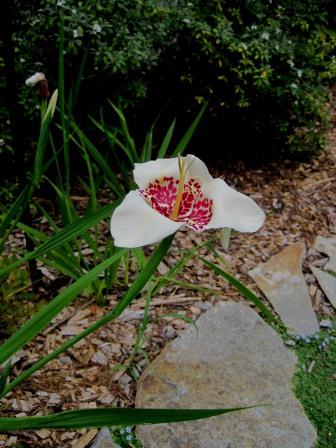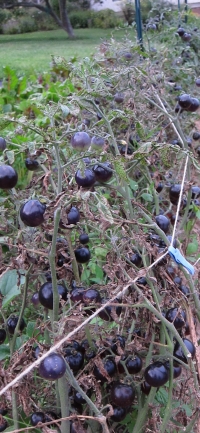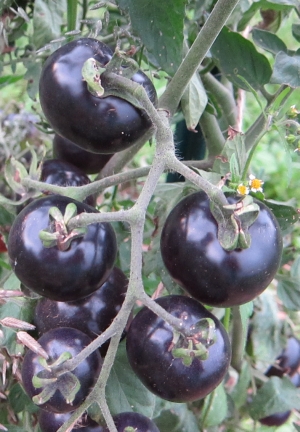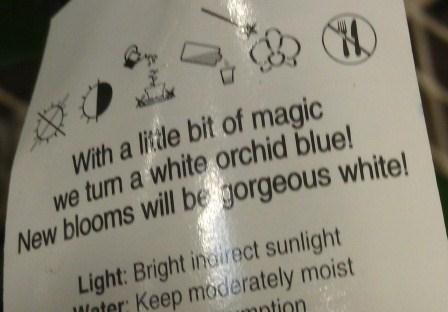
My recent post on Seattle Public Utilities proposed restriction on the use of non-native plants for landscaping drew the ire of Taryn Evans of the Florida Native Plant Society. Taryn was critical not only of what I had to say but how I said it. She felt that my post was ‘clumsy’ and lacked a clear focus. In my defense, part of the perceived lack of clarity may stem from a lack of context. I alluded to several previous blog posts (including the references to using goats and schoolchildren to control invasives) but didn’t include the links – which are now listed at the end this post.
In terms of my other points, let me state my views as succinctly as possible.
I support promoting the increased use of natives in landscapes as part of an overall effort to increase landscape diversity and stability. Part of this is based on the notion that a diverse landscape –including natives – is buffered against various environmental and biological perturbations. But I also support natives because they provide a linkage to our native environment or sense of place. This second argument, by the way, is adopted by the California Native Plant Society http://www.cnps.org/cnps/about/ but is dismissed by Tallamy who states that his argument for native plants “moves beyond debatable values and ethics and into the world of scientific fact.”
I do not support legal restrictions that mandate the use of native plants in landscapes
Here are my concerns:
– The “scientific facts” regarding natives are not universally accepted by ecologists and are subject to debate as well. http://www.nature.com/nature/journal/v474/n7350/full/474153a.html#/ref8 A species’ need for water/nutrients/pesticides is a function of the environment in which the species evolved and not necessarily a native/non-native question. Invasiveness is an undoubtedly an issue, but exotic does not mean invasive. Some will argue that we can hedge our bets and prevent future invasions by planting only natives. And that is a justifiable position – I don’t agree with it – but I accept it as a rational argument. The dilemma with banning all exotics is that we throw the baby out with the bathwater and risk eliminating many useful plants.
– Natives can make great landscape plants in the right place but in many cases they are poor choices, especially in the built environment. Consider some of Tallamy’s recommendations from “Bringing Nature Home”:
Cottonwood. Cottonwoods are banned by many tree ordinances for their mess (cottony seeds and sticky buds) and are weak-wooded.
Maples. Maples are great landscape trees but we need to consider the fact that they are already overplanted in many communities. If we look at street trees and other public trees, maples make 50% or more of the tree population in some cities and towns. Does planting more make sense in these situations?
Ashes. Maybe if you live west of the Rockies, otherwise they’re a non-starter.
Lindens. Lindens have great form, growth rate and color. Unfortunately they are candy to Japanese beetles.
Elms. A handful of Dutch elm disease tolerant cultivars of American elm are available but the vast majority of trees available are Eurasian hybrids.
– Plants, especially trees and shrubs, evolve slowly. If we accept current climate predictions, trees planted today may experience very different climates in their lifetimes than those under which they evolved. The widespread outbreak of pine beetle (a native pest) in the Mountain West that is destroying millions of acres of pines could be an early indicator that changes in climate are already increasing stress levels and reducing the fitness of native trees.
Taryn was also critical of the tone of my post. For me and my co-bloggers this space is the editorial page of our lives. The blog is an opportunity to let our hair down a bit, vent on pet peeves, and sometimes shoot from the hip and play agent provocateur. No one likes to be criticized but it comes with holding our ideas up to public scrutiny and I accept that. I should note, however, that as the native debate moves from advocacy and education to codes and regulation, native advocates need to brace for increased criticisms and have their logical and scientific ducks in a row – which is the take-home theme of my post. Let’s face it, my critique was mild. As seen in the repsones to my post, some are quick to politicize or label the native case as disingenuous. Others would go further still and have labeled nativists as reactionaries and xenophobes (See http://arnoldia.arboretum.harvard.edu/pdf/articles/646.pdf or wade through David Theodoropoulos’s “Invasion Biology: Critique of a Pseudoscience). Obviously this is taking the argument to a ridiculous extent. I’m all for a fair debate where we can question statements and ideas but not motivations.
Earlier posts:
Are natives the answer?
Controlling invasives with schoolchildren
Controlling invasives with goats










